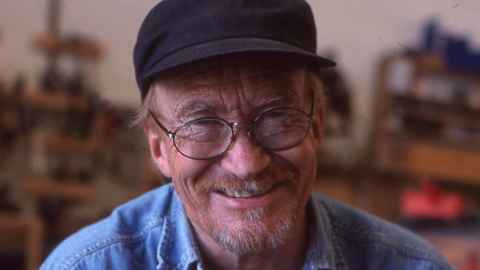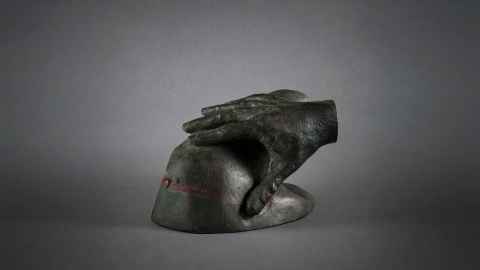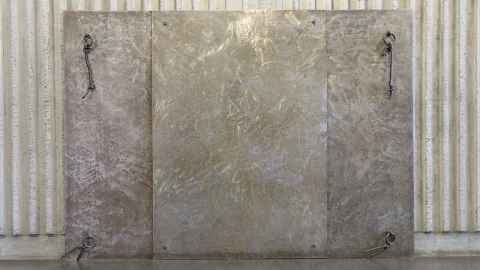Greer Twiss ONZM: an arts icon
29 July 2025
The arts community mourns the loss of preeminent New Zealand sculptor Greer Twiss: 23 June 1937 – 17 July 2025.

With a celebrated career spanning more than six decades, Greer Twiss was a crucial figure in the exploration and development of three-dimensional sculpture in Aotearoa New Zealand during the twentieth century.
He is renowned for his tactile works in cast bronze and for several public commissions that introduced contemporary sculpture to public spaces in Auckland, including The Karangahape Rocks (1968), which sits on the corner of Karangahape Road and Symonds Street.
Twiss was born in Epsom, Auckland in 1937 and attended Auckland Grammar School. He had a long affiliation with the University of Auckland, graduating from Elam School of Fine Arts with a Bachelor of Fine Arts (Hons) in sculpture in 1959. In the late 1960s, Twiss was appointed to a lecturing position at Elam. He later held the position of head of sculpture for more than 20 years between 1974 and 1998, during which he influenced generations of young artists.
In his time as a student, he first researched bronze and lead casting, which would become the predominant mediums he turned to throughout his artistic career. He followed his fine arts studies with a year of training at the Auckland College of Education in 1963, after which he taught puppetry and pottery in schools. A lifelong interest in puppetry undoubtedly helped to shape the whimsical figurative style that characterised his sculptural work, which he began to exhibit in the late 1950s.

Twiss was a founding member of the New Zealand Society of Sculptors and was awarded a Queen Elizabeth II Arts Council travel grant in 1965. The grant gave him the opportunity to travel to the UK, Italy and Germany to study the traditional lost-wax bronze process, which had a significant impact on his stylistic development. Twiss used the fluidity and transformative qualities of bronze to interrogate muscularity and the human body, alongside themes addressing socio-political concerns.
Thirteen of Twiss’s artworks are part of the University’s Art Collection, including a series of works on paper, small bronze sculptures and site-specific installations that live on campus. The largest of these is Link (1975-76), a sculptural installation that was commissioned by Hamish Keith for the Grafton Medical School ‘Link’ building when it opened in 1975.
Link was one of several artworks commissioned by the country’s foremost artists for the space, including the Roman Numerals (1975) series by Colin McCahon and Pat Hanly’s iconic paintings The Seven Ages of Man (1975).

Link is an example of Twiss’s later works that introduced a variety of sculptural materials direct cast in hard metal, including soft objects like cloth and knotted ropes. Made from steel and cast bronze, Link was originally installed between the floor and walls of the former space and now resides as a wall-based sculpture in Building 505, Grafton Campus.
The related installation Line Up (1977) was commissioned for the University of Auckland Engineering School shortly after, between 1976 and 1979. Both sculptures incorporate tactile examples of Twiss's bronze ropes, each mounted against sheets of steel.
Alongside his public sculptures, Twiss’s artworks are represented in many important public and private collections throughout the country, including Auckland Art Gallery Toi o Tāmaki and Te Papa Tongarewa Museum of New Zealand.
Twiss was acknowledged with an Arts Foundation Icon Award in 2011, recognising his contribution to art and education in Aotearoa New Zealand. He also received an ONZM for Sculpture in the Queen’s Birthday Honours in 2002.
A memorial service celebrating Greer Twiss’s life and achievements was held in central Auckland on 25 July 2025.
– Madeleine Gifford, University of Auckland Art Collection Adviser